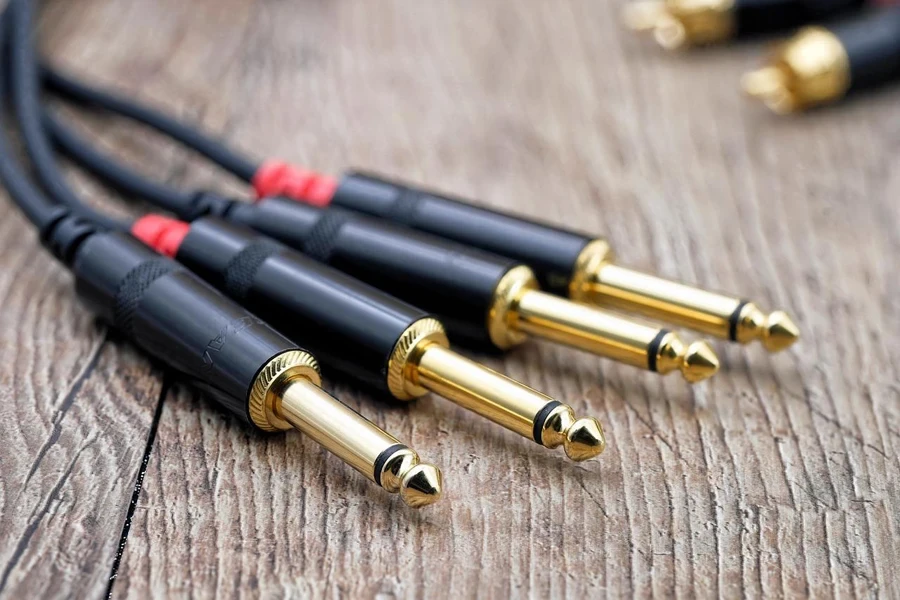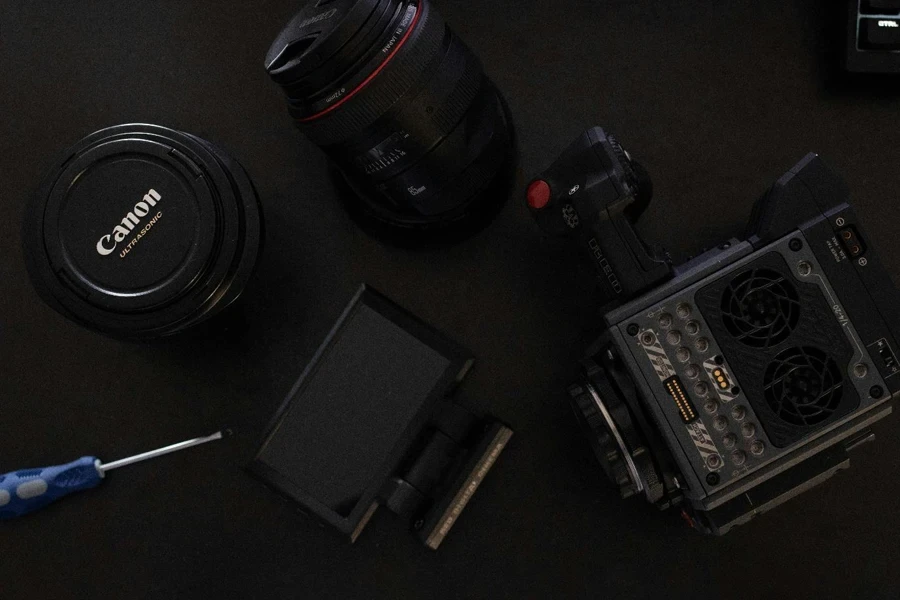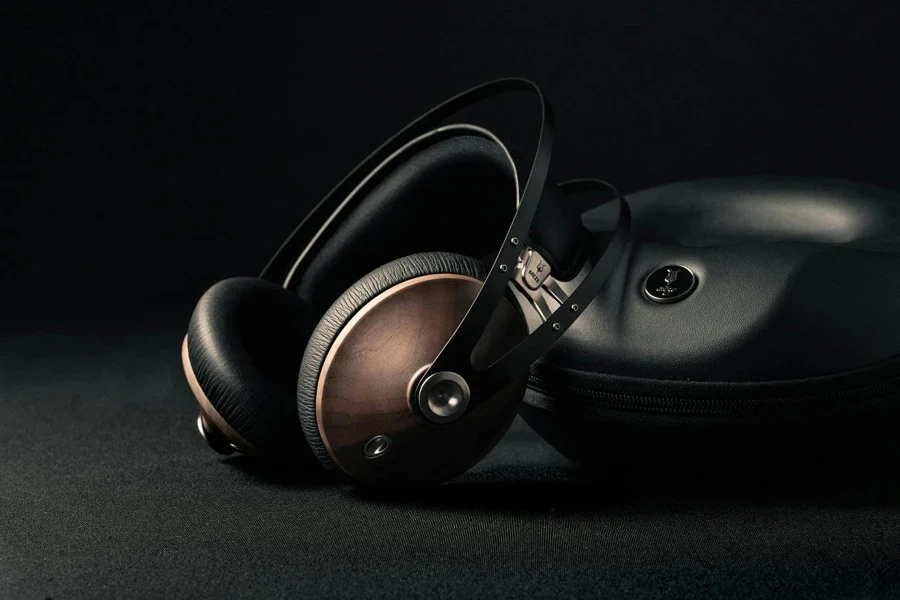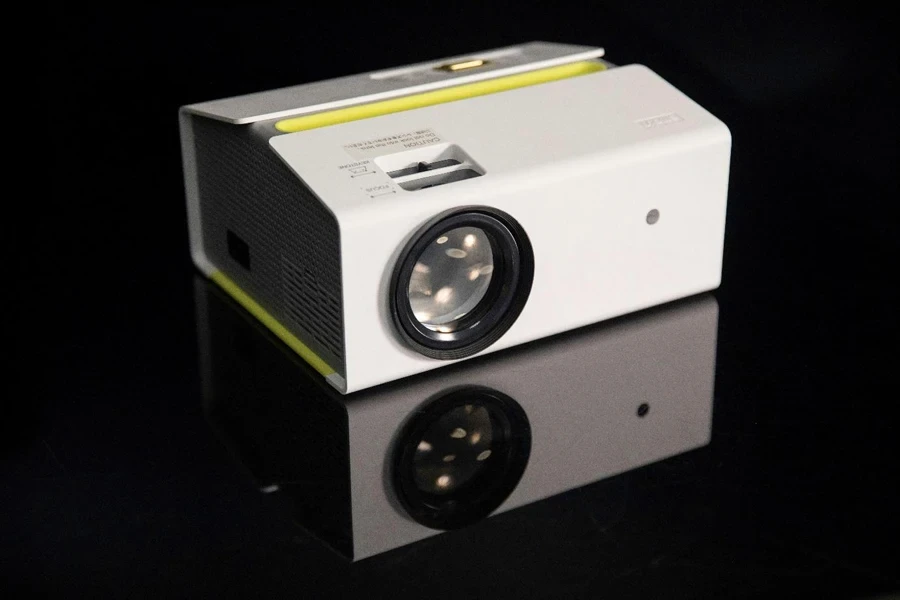In today’s world that thrives on digital technology and entertainment content consumption, audio, and video accessories have become essential tools that greatly improve the overall experience for individuals in their personal lives and professional endeavors. With the rapid progress of technology shaping the market landscape, keeping up with these trends is vital for industry experts looking to make informed purchasing choices. Professionals can effectively navigate the market terrain by staying updated on these advancements. Taking advantage of emerging prospects and being informed about these trends is key to staying competitive in this dynamic industry environment.
Table of Contents
● Understanding the market dynamics of audio & video accessories
● The evolution of audio & video technology: Innovations shaping the future
● Spotlight on top-selling models leading the market
● Conclusion
Understanding the market dynamics of audio & video accessories

Market scale and growth trends
The worldwide market for audio and video accessories is rising due to the rising need for top-notch entertainment and communication devices in different industries. In 2023, it was valued at USD 453 billion. It is expected to hit around USD 742 billion by 2031, with a growth rate of 13.4%, as reported by Verified Market Research. The market is experiencing growth due to fast-paced technological progressions in high-quality audio and video technologies and the incorporation of smart functionalities into consumer electronics devices like headphones and TVs. The increased adoption of these gadgets across industries such as gaming and streaming services contributes to expanding the market.
Market segmentation and key players
Product type, sales channels, and end-users broadly segment the audio and video accessories market. Audio equipment, including headphones, speakers, and microphones, constitutes a significant portion of the market, while video equipment, such as cameras, projectors, and monitors, also commands a substantial share. The market is divided between OEMs and aftermarket sales, with OEMs leading due to their integration with primary electronic devices. Key players such as Samsung Electronics, Sony Corp, LG Electronics, Panasonic Corporation, and Bose Corporation dominate the market, continuously introducing innovative products to meet the evolving consumer demands. These companies leverage their strong R&D capabilities to maintain competitive advantages and capture significant market share.
Regional market shares and trends
Regarding distribution, North America leads the way in the audio and video accessories market due to robust consumer interest, well-developed technological capabilities, and a substantial disposable income bracket. The presence of tech firms also backs the region’s dominance. Asia-Pacific, however, is expected to witness the highest growth rate during the forecast period, primarily due to the increasing penetration of smartphones, the rise of middle-class consumers, and the rapid urbanization in countries like China and India. Local trends, such as the popularity of mobile gaming and online streaming, significantly influence market dynamics in these regions, prompting global companies to tailor their offerings to suit regional preferences.
The evolution of audio & video technology: Innovations shaping the future

Advancements in audio technology
Recent advancements in audio technology have significantly raised the bar for sound quality and user experience. Spatial audio has emerged as a critical innovation, offering a 360-degree sound environment that mimics real-world acoustics. This is accomplished using algorithms that continuously process audio signals to position sound sources around the listener dynamically. This technology is especially beneficial in gaming and virtual reality scenarios as it can enhance the experience by accurately placing sounds. Wireless audio systems have improved thanks to codecs like aptX and LDAC, which allow almost lossless audio transmission via Bluetooth. They can handle high-quality audio streams and compete well with wired systems regarding sound quality. Smart audio devices with AI features enhance the experience by providing adaptive sound settings that automatically adjust volume based on environmental noise and user preferences. Many of these gadgets come with integrated Digital Signal Processing chips that enhance quality in real-time.
Video technology breakthroughs

Video technology is transforming thanks to the emergence of 4k and 8k resolution screens. The integration of HDMI 2.1 connections enables these resolution standards by providing a data capacity of up to 48 Gigabytes per second—crucial for delivering high-quality video content like 8k footage at 60 frames per second or 4k content at 120 frames per second. This meticulous level of clarity plays a role in industries such as professional video editing, where precision is paramount. Furthermore, incorporating High Dynamic Range (HDR) technology has improved color precision and contrast in images to make them more vivid and realistic. Screens utilizing OLED and QLED technology are widely used nowadays, providing deep blacks and bright whites by precisely controlling individual pixels or quantum dots. Additionally, VR and AR technologies are advancing rapidly, with devices now capable of 6DoF (Six Degrees of Freedom), allowing users to move freely within a virtual space while maintaining visual and spatial coherence. The refresh rates in these devices have also improved, reaching up to 120Hz, which minimizes motion sickness and provides a smoother experience.
Integration of AI and smart features
Artificial intelligence has greatly influenced the advancements in audio and video technologies, leading to significant improvements in functionality and user satisfaction levels. AI-powered active noise cancellation (ANC) in audio systems has advanced with multiple microphones and adaptive algorithms that effectively reduce unwanted background noise across various frequencies. Premium devices now offer a band ANC feature that dynamically adapts to different sound environments in real time. In video technology today, artificial intelligence enhances lower-resolution content in time to 4k or 8k resolution. Deep learning models are employed for this task, scrutinizing and projecting missing pixels to elevate the image quality.
Additionally, progress in facial recognition and tracking technologies is notable. These advancements facilitate focus and exposure adjustments in cameras. This feature benefits dynamic settings such as live events or sports broadcasts. Furthermore, AI in smart gadgets facilitates smooth communication with voice assistants and intelligent home systems, permitting features like automatic lighting modifications and synchronized playback on various devices.
Spotlight on top-selling models leading the market

Top audio accessories driving sales
In the market for accessories, premium headphones and soundbars are popular items that greatly boost sales figures. Sony’s WH-1000XM5 headphones dominate the market due to their industry-leading noise-cancellation technology and superior sound quality, powered by dual noise sensor technology and Edge-AI for real-time sound adjustment. Another significant contributor is the Bose QuietComfort 45, renowned for its lightweight design and 24-hour battery life, making it a favorite among professionals and frequent travelers. Soundbars like the Sonos Arc, with its Dolby Atmos support and multi-room audio capabilities, have become essential for home entertainment systems, offering an immersive audio experience that rivals traditional home theater setups. The Samsung HW Q990C soundbar significantly influences consumer choices with its 11.1.4 Channel setup and advanced sound optimization through AI technology. It’s especially popular among individuals looking for premium options and spacious living areas.
Video accessories shaping consumer preferences
In the video accessories segment, high-definition projectors and streaming devices are at the forefront of consumer demand. The Epson Home Cinema 5050UB, known for its 4K PRO-UHD resolution and HDR compatibility, leads the market in home theater projectors, offering cinema-quality visuals with exceptional color accuracy and contrast. LG HU85LA Ultra Short Throw Projector is widely loved for its design, which allows it to project a 120-inch image from only 7.2 inches away. Its cutting-edge laser technology has made it a popular pick among home entertainment fans. Streaming devices like the Roku Ultra continue to be consumer favorites due to their simple interface and support for Dolby Vision and HDR10+ content, catering to the growing demand for high-quality streaming. Apple’s TV 4K model, featuring the A12 Bionic chip for enhanced performance and support for a wide range of apps and services, remains a key player in the market, offering seamless integration with other Apple products.
Market impact of flagship models
Top-tier models from known brands boost sales and establish the norms and styles for the entire market scene. The Sony WH 1000XM5 and Bose QuietComfort 45 headphones illustrate this phenomenon; they shape rival products’ designs and feature unique packages while pushing the boundaries of consumer expectations in high-end audio devices. Similarly, the Epson Home Cinema 5050UB and LG HU85LA projectors have established image quality and aesthetics standards in video technology. Streaming devices like the Roku Ultra and Apple TV 4K are also pivotal, as their success reflects a broader shift towards high-definition content consumption and the integration of smart features, which is increasingly becoming a standard expectation among consumers. These flagship models shape consumer preferences and drive technological advancements across the industry, influencing future product development and market trends.
Conclusion

The audio and video accessories market is growing rapidly due to technological advancements and the release of new high-tech products. Innovations like audio features, 8k resolution screens, and AI-driven functions are changing consumers’ expectations and causing increased demand. These advancements are creating standards for quality and performance in the industry. As these trends evolve, staying informed is crucial for professionals looking to capitalize on emerging opportunities in this dynamic market.




